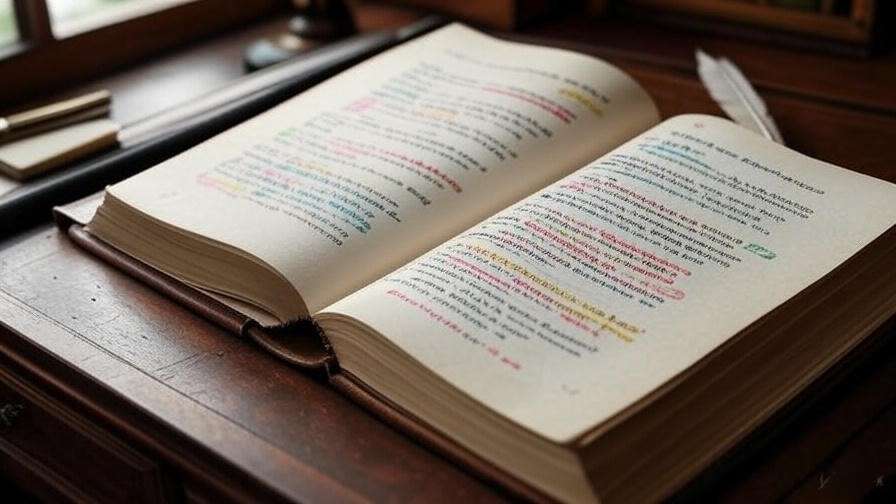Picture a classroom alive with energy: students lean forward, eyes bright, as they take turns reading lines from Romeo and Juliet, their voices rising with the passion of star-crossed lovers. This scene isn’t a fantasy—it’s achievable with the right Romeo and Juliet play script for students. Shakespeare’s timeless tale of love, conflict, and fate captivates young minds, but its Elizabethan language and complex themes can feel overwhelming. For teachers, parents, and students seeking an accessible way to explore this classic, a student-friendly script is the key. As a Shakespeare enthusiast with years of experience in educational settings, I’ve seen firsthand how the right script transforms intimidation into inspiration. This comprehensive guide equips educators with tools, strategies, and resources to make Romeo and Juliet engaging and meaningful, ensuring students not only understand but also love this iconic play.
Why Romeo and Juliet Matters for Students
The Timeless Appeal of Shakespeare’s Love Story
Romeo and Juliet resonates with students because its themes—love, rebellion, and tragedy—mirror the emotional turbulence of adolescence. The story of two young lovers defying their feuding families speaks to teens navigating their own conflicts, whether with parents, peers, or societal expectations. For example, a student once shared with me how Juliet’s defiance of her parents echoed her own struggles with family expectations, sparking a lively class discussion. These universal themes make the play a powerful tool for connecting with young readers, fostering empathy and self-reflection.
Educational Benefits of Studying the Play
Beyond its emotional pull, Romeo and Juliet offers significant academic benefits. Studying the play hones critical thinking as students analyze character motivations and moral dilemmas. It also builds language skills, exposing students to rich vocabulary and poetic devices like iambic pentameter. According to Dr. Emma Smith, a Shakespeare scholar at Oxford University, engaging with Shakespeare’s texts enhances cognitive flexibility, as students learn to navigate complex language and ideas. The play aligns with Common Core standards, such as CCSS.ELA-LITERACY.RL.9-10.2, which emphasizes analyzing themes and character development, making it a staple in curricula worldwide.
Challenges of Teaching Romeo and Juliet to Students
Overcoming Language Barriers
The biggest hurdle in teaching Romeo and Juliet is its Elizabethan English. Words like “thou,” “wherefore,” and “hence” can confuse students, while dense metaphors and archaic grammar may feel like a foreign language. For instance, the line “Wherefore art thou Romeo?” often stumps students who misinterpret “wherefore” as “where.” To address this, teachers can provide a quick glossary of key terms or encourage students to paraphrase lines in modern English. Simplifying without sacrificing meaning is crucial for accessibility.
Engaging Diverse Learners
Classrooms today are diverse, with students of varying reading levels, cultural backgrounds, and learning needs. English Language Learners (ELLs) may struggle with Shakespeare’s vocabulary, while reluctant readers might disengage entirely. A teacher I worked with once shared how her ELL students felt excluded until she introduced a simplified script with visual aids. Tailoring the play to different learners—through group activities, multimedia, or adapted texts—ensures inclusivity and keeps students invested.
What Makes a Student-Friendly Romeo and Juliet Play Script?
Key Features of an Effective Script
A student-friendly Romeo and Juliet play script balances authenticity with accessibility. Key features include:
- Simplified Language: Retains Shakespeare’s poetic essence but uses clearer phrasing.
- Clear Stage Directions: Guides students through actions and emotions for performances or readings.
- Annotations: Explains historical context, vocabulary, and cultural references.
- Engaging Layout: Uses modern formatting, like bolded character names, for easy reading.
For example, a good script might rephrase “O brawling love, O loving hate” as “O fighting love, O hateful passion” while preserving the oxymoron’s impact. Teachers should look for scripts that prioritize clarity without dumbing down the text.
Comparing Original vs. Adapted Scripts
The original Romeo and Juliet text, available through sources like the Folger Shakespeare Library, offers unmatched depth but can overwhelm students. Adapted scripts, like those from No Fear Shakespeare or Shakespeare for Young People, modernize language while keeping the story intact. For instance, No Fear Shakespeare provides side-by-side original and modern texts, ideal for scaffolding learning. However, adaptations risk losing nuance, so teachers must choose versions that maintain Shakespeare’s intent. Dr. Michael Dobson, director of the Shakespeare Institute, emphasizes that adaptations should “honor the spirit of the original while opening doors for new readers.”
Where to Find the Best Romeo and Juliet Play Scripts for Students
Free and Paid Resources
Finding the right script is easier than ever with both free and paid options:
- Folger Digital Texts (free): Offers the original text with downloadable PDFs and annotations.
- No Fear Shakespeare (paid/free online excerpts): Provides modern translations alongside the original.
- Shakespeare for Young People (paid): Features abridged scripts designed for classroom performances.
- Open Source Shakespeare (free): Includes searchable scripts for quick reference.
When selecting a script, ensure it’s from a reputable source to avoid errors or overly simplified versions. A checklist for evaluating scripts (available as a downloadable PDF at the end of this article) can guide teachers in choosing high-quality materials.
Digital Tools and Apps
Technology enhances script accessibility. Platforms like Shakespeare’s Globe offer interactive scripts with audio recordings, while BBC’s Shakespeare Unlocked provides lesson plans and videos. Apps like Lit Charts include annotated Romeo and Juliet texts with summaries and analyses. One teacher I know used Lit Charts’ app to project key scenes during class, helping students visualize the action. These tools make the play dynamic and engaging, especially for tech-savvy students.
How to Use a Romeo and Juliet Play Script in the Classroom
Strategies for Active Learning
Active learning brings Romeo and Juliet to life. Try these approaches:
- Reader’s Theater: Assign roles for students to read aloud, fostering collaboration.
- Scene Analysis: Have small groups dissect a scene’s themes or character motivations.
- Role-Playing: Let students act out scenes, like the balcony scene, to explore emotions.
For example, a lesson plan for Act 2, Scene 2 might involve students reading the balcony scene aloud, then discussing Romeo’s impulsive language. These activities make the script interactive and memorable.
Adapting Scripts for Different Age Groups
Middle school students need shorter, simpler scripts, while high schoolers can handle more complex texts. For younger learners, focus on key scenes like the party (Act 1, Scene 5) or the duel (Act 3, Scene 1). A middle school teacher I collaborated with cut the play to 45 minutes, emphasizing the love story while omitting denser subplots. For high schoolers, include more of the original text with guided discussions to unpack themes like fate versus free will.
Incorporating Multimedia
Multimedia enhances engagement. Pairing the script with Baz Luhrmann’s 1996 film Romeo + Juliet helps students visualize the story’s modern relevance. For instance, the film’s vibrant party scene can spark discussions about the Capulet-Montague feud. Teachers can also integrate music (e.g., a playlist inspired by the play’s emotions) or art projects, like designing a set for Verona. These elements make the script a springboard for creative exploration.
Tips for Engaging Reluctant Readers
Making Shakespeare Fun
Engaging reluctant readers requires creativity to make Romeo and Juliet feel relevant and exciting. One effective strategy is rewriting scenes in modern slang. For example, students could transform Romeo’s poetic declarations into text-message-style dialogue, turning “My lips, two blushing pilgrims, ready stand” into “Yo, my lips are ready to vibe.” Another idea is gamifying the script with activities like a “Shakespeare Quote Quiz” or a classroom “Capulet vs. Montague” debate. A teacher I worked with once organized a “Shakespeare Rap Battle,” where students crafted rhymes based on character motivations, making the play both fun and memorable. These activities break down barriers and help students see Shakespeare as approachable.
Connecting to Modern Issues
Linking Romeo and Juliet to contemporary issues bridges the gap between Shakespeare’s world and students’ lives. The feud between the Capulets and Montagues can be compared to modern social media rivalries or gang conflicts, sparking discussions about tribalism and division. Juliet’s struggle for autonomy resonates with teens navigating parental expectations or societal pressures. For instance, a class discussion could explore how Romeo’s impulsiveness mirrors rash decisions made in the heat of a viral online argument. Veteran educator Jane Thompson, who has taught Shakespeare for over 20 years, notes, “When students see their own experiences in the play, they stop seeing it as ‘old’ and start seeing it as theirs.” These connections make the script a tool for real-world reflection.
Performance Tips for Student Productions
Simplifying Staging and Costumes
Staging a Romeo and Juliet production doesn’t require a big budget. Minimalistic sets, like a single arch to represent Verona’s streets, keep the focus on the script. Costumes can be sourced from thrift stores or students’ closets—simple scarves in red and blue can distinguish Capulets from Montagues. A high school drama teacher shared how her class used cardboard props to create a balcony scene, proving that creativity trumps expense. Focus on clear blocking and expressive delivery to let the script shine, ensuring students feel confident without overwhelming logistics.
Building Confidence in Student Actors
Many students, especially shy ones, hesitate to perform. Build their confidence with warm-up exercises like “Mirror Mirror,” where pairs mimic each other’s movements to loosen up, or “Line Toss,” where students practice lines in a playful, low-pressure way. Rehearsal strategies, such as breaking scenes into small chunks or practicing in small groups, help students master their roles gradually. Encourage them to connect with their character’s emotions—prompting a student playing Mercutio to channel their own sense of humor, for example, can make performances authentic. These techniques empower students to embrace the script and shine on stage.
Assessing Student Understanding
Creative Assessment Ideas
Traditional essays are valuable, but creative assessments deepen engagement with the Romeo and Juliet script. Assign a character diary where students write entries as Romeo or Juliet, reflecting on key moments. Alternatively, have students create a podcast episode analyzing the play’s themes or retell a scene in a modern setting, like a vlog. One teacher I know had students design a “Verona Times” newspaper front page covering the play’s events, blending creativity with analysis. These projects align with ELA standards while making assessment dynamic and student-centered.
Aligning with Educational Standards
Assessments should tie to standards like CCSS.ELA-LITERACY.RL.11-12.3, which focuses on analyzing complex characters. For example, a rubric for a student-led performance might evaluate delivery, understanding of character motivation, and collaboration. Documenting progress through portfolios or reflective journals helps teachers demonstrate student growth to administrators or parents. Dr. Linda Bradley, an education consultant, emphasizes that “authentic assessments, like performances or creative writing, show deeper comprehension than multiple-choice tests.” Providing clear rubrics ensures fairness and clarity while meeting curriculum goals.
FAQs About Romeo and Juliet Play Scripts for Students
- What is the best Romeo and Juliet script for beginners?
No Fear Shakespeare and Folger’s abridged versions are ideal, offering clear language and annotations. They balance accessibility with fidelity to the original, perfect for middle and high school students. - How can I make Shakespeare less intimidating for students?
Use pre-reading summaries, visual aids like scene diagrams, and group readings to build confidence. Start with high-energy scenes, like the duel in Act 3, to hook students. - Are there free scripts available online?
Yes, Folger Digital Texts and Open Source Shakespeare offer free, reliable scripts. Avoid low-quality sites with incomplete or inaccurate texts, and always check for annotations to aid understanding. - How long does it take to teach Romeo and Juliet?
A 4-6 week unit is typical, with 1-2 weeks for reading, 2 weeks for analysis and activities, and 1-2 weeks for performance or projects. Adjust based on student needs and curriculum goals. - Can I adapt the script myself?
Yes, but ensure adaptations respect copyright laws. Use public domain texts (like Folger’s) and focus on simplifying language or shortening scenes while preserving key themes.
Additional Resources for Teachers and Students
For deeper exploration, consider these resources:
- Books: Teaching Shakespeare by Rex Gibson offers practical classroom strategies.
- Websites: The Shakespeare Birthplace Trust (shakespeare.org.uk) provides lesson plans and activities.
- Videos: The Royal Shakespeare Company’s YouTube channel features performance clips and workshops.
Teachers can also join local theater groups or workshops, like those offered by the Folger Shakespeare Library, for hands-on training. These resources enrich script-based lessons and inspire creative teaching.
A student-friendly Romeo and Juliet play script transforms Shakespeare’s masterpiece into an accessible, engaging experience for young learners. By selecting the right script, using active learning strategies, and connecting the play to students’ lives, educators can ignite a passion for literature. Whether through reader’s theater, creative projects, or minimalist performances, the script becomes a gateway to exploring love, conflict, and human nature. Try these strategies in your classroom and share your success stories in the comments below. For more Shakespeare teaching tips, explore our related posts on the William Shakespeare Insights blog, such as “Teaching Hamlet to Teens” or “Decoding Shakespeare’s Language.”













